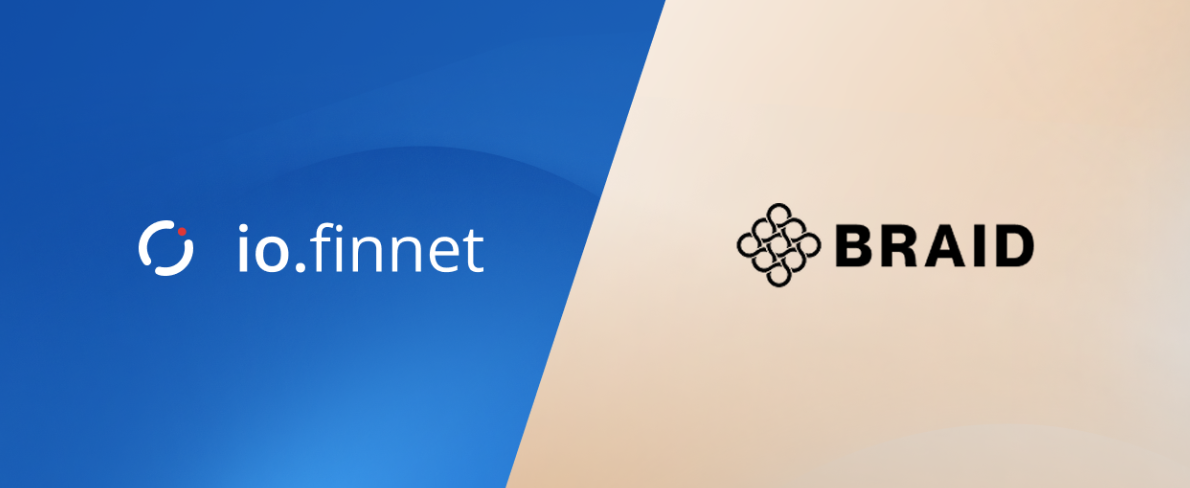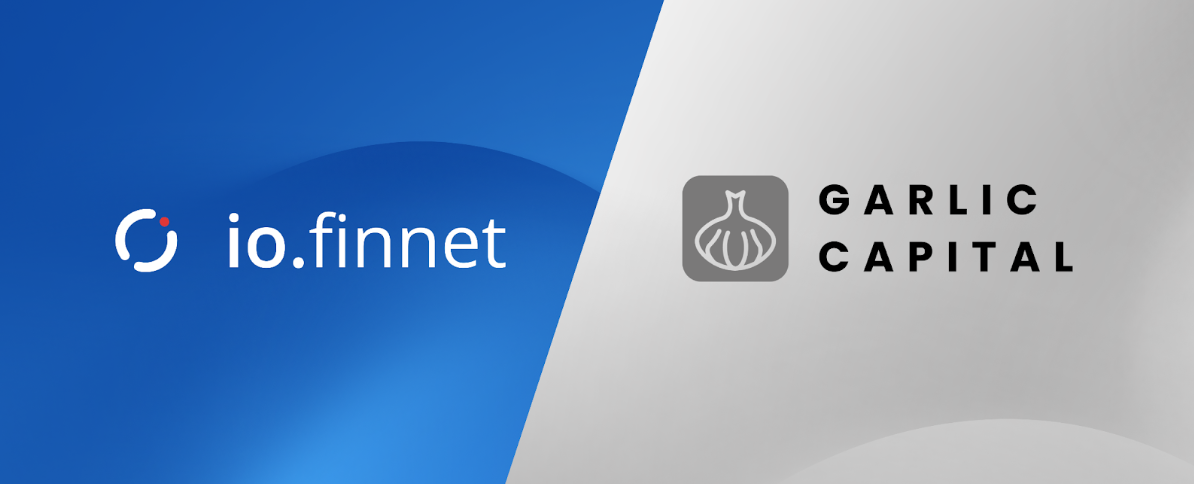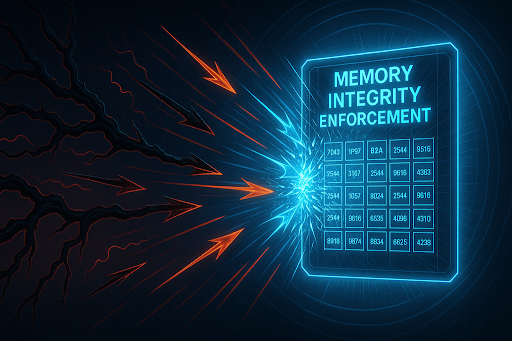LEARN
What Is Self-Custody and Why Do You Need It in 2025?
With cryptocurrency hacks and exchange failures on the rise, taking control of your digital assets has never been more critical.
And this is where Self-Custody comes into play.
It’s a secure way to manage your crypto, ensuring that only you have access to your funds — without relying on exchanges or third parties.
In this guide, we explore self-custody in detail — how it works, why it matters, and how io.finnet’s io.vault can simplify the process.
This Article Contains
- What Is Self-Custody?
- What Are the Benefits of Self-Custody?
- io.vault by io.finnet: A Robust Self-Custody Solution for Securing Your Digital Assets
- What Are the Risks of Self-Custody? (+ How to Mitigate Them)
- Top 3 Self-Custody Best Practices for 2025
- 4 FAQs About Self-Custody
Self-Custody refers to managing your crypto assets yourself without relying on third-parties like banks or exchanges. Unlike traditional banking, self-custody puts you in the driver’s seat — eliminating reliance on potentially vulnerable third parties.
This method empowers you to hold and manage your own private keys, giving you full access to your digital assets.
3 Types of Self-Custody Wallets
Self-custody wallets come in different forms, each offering unique security and accessibility features to help you manage your crypto securely. Let’s explore each in detail:
- Hardware Wallet: A physical device that stores private keys offline for enhanced security, providing a high level of protection against online threats. Although reliable, this kind of cryptocurrency wallet can be expensive and less convenient for quick transactions.
- Software Wallet: An app that securely stores and manages your cryptocurrency's private keys, offering easy access and quick transactions directly from your computer or mobile device. However, this digital wallet could be vulnerable to malware and hacking attacks if the device you’ve installed it on is compromised. To combat such issues, io.vault by io.finnet employs advanced security features like trustless Multi-Party Computation (tMPC) and disaster recovery protocols. (We’ll cover io.vault in more detail later.)
- Paper Wallet: A physical document containing both public and private keys printed or written down, offering a simple and cost-effective way to store crypto assets offline. However, a paper wallet is susceptible to physical damage and loss. Also, accessing funds requires additional steps, such as importing the keys into a digital wallet.
Now that the basics are out of the way, we’ll explore why it’s worth considering self-custody in 2025.
Self-custody offers a plethora of benefits, including complete control over your assets, enhanced security, reduced costs, and more. Here’s everything you need to know:
- Complete Control Over Assets: You have the ultimate authority over your digital currencies, free from the oversight or intervention of banks or a third party custodian. This means you can make decisions swiftly without waiting for approvals that might affect your trading opportunities or financial management.
- Enhanced Security: By managing your own private keys, you minimize the risks associated with third-party breaches or failures, and this protects your assets from unauthorized access. For example, in February 2025 alone, centralized exchange breaches cost users over $1.5 billion — a risk that could be mitigated by adopting self-custody.
- Privacy: Self-custody enhances privacy, as your transactions and holdings aren’t tracked or shared by a centralized service. This is crucial for those who prefer anonymity, especially in regions where financial actions are closely monitored or restricted.
- Immediate Access: You can access and transact with your cryptocurrency assets anytime without the need for permissions or the risk of third-party processing delays. This is particularly beneficial during periods of high market volatility, where the ability to trade timely can lead to significant gains.
- Reduced Costs: Avoiding third-party management services can lead to lower fees for transactions and maintenance, as there are no intermediaries involved. Moreover, this direct management often translates to fewer transaction errors and unnecessary charges that can accumulate over time.
But here’s the thing:
If you’re ready to reap all these benefits, you need to leverage a reliable self-custody platform like io.vault.
Wondering why?
Let’s dive deeper into the details:
io.vault is a self-custody solution that empowers businesses to manage their digital assets directly without relying on a third party custodian.

Our platform has quickly become a preferred choice for prominent entities in the digital asset space. It’s designed to serve a diverse client base and businesses of all sizes, including OTCs, DeFi platforms, cryptocurrency exchanges, and active trading funds.
Here are the key features and benefits of io.finnet:
- Scalable Trustless Multi-Party Computation (tMPC): io.finnet is highly scalable and can be customized to fit any organization's needs, allowing the creation of unlimited vaults, signers, thresholds, and approver hierarchies to meet specific security requirements.
- Web3 Access: Provides a unified interface to manage all your DeFi apps seamlessly, supporting both EVM and non-EVM chains through WalletConnect integration.
- Comprehensive Asset Support: Supports a wide range of digital assets, including Bitcoin, Ethereum, and various tokens, ensuring versatility for diverse portfolio management. View our list here.
- Compliance and Policy Enforcement: Enables enforcement of internal policies for transfer instructions and validation, ensuring that no single employee can control all funds, thereby enhancing security.
- Regulatory Compliance: Designed to comply with essential regulatory requirements like KYC and AML, adding an extra layer of security and trust for users.
- Customizable Transaction Costs and Speeds: Offers a customizable gas fee feature that allows users to adjust transaction fees based on their needs, optimizing for cost or speed.
- Advanced Disaster Recovery: Provides options for trustless disaster recovery, allowing for immediate funds recovery without third-party interaction, using existing signers to issue a "reshare" to replace lost or compromised devices.
- Developer Integration and Automation Capabilities: Offers comprehensive APIs and SDKs that enable full automation of end-to-end business processes and integration with DeFi platforms, providing a robust environment for tech-savvy users and developers.
- Blockaid Transaction Simulation: Screens for malicious activity, adding an extra layer of defense during transaction orchestration.
Next, we’ll walk you through some of the hurdles you might come across while using a self-custody solution.
While self-custody offers unparalleled control over your cryptocurrency assets, it comes with its own set of risks. Here’s what you need to know to protect yourself:
The risks of losing your private keys or having them stolen are significant in self-custody. And without a backup, either scenario could result in permanent loss of access to your cryptocurrency.
To mitigate these risks, regularly back up your keys in multiple secure locations (such as an encrypted storage device), use strong passphrases, and employ multi-factor authentication along with multisignature setups for enhanced digital wallet security.
Unlike banks, a Self-Custody crypto wallet typically doesn’t have built-in recovery mechanisms if you forget your password or lose access to your private key.
To address this, establish a clear recovery protocol, such as storing your recovery seed in a safe deposit box or entrusting it to a reliable legal advisor.
Alternatively, consider reliable self-custody solutions like io.finnet, which allow you to instantly recover funds using “trustless” disaster recovery without any third-party interaction. With io.finnet, your team can securely reassign keys without waiting on any middlemen.
Operating self-custody solutions requires a certain level of technical know-how, which can be daunting for non-technical users.
To overcome this, invest time in learning about your chosen technology through online communities and resources. If you want to make your life easier, contact our io.finnet experts so they can walk you through the ins and outs of self-custody technology.
Now, to further enhance the security of your digital assets, we’ll walk you through the best practices that every digital asset owner should adopt.
Maintaining control and safety of your digital assets isn’t a one-time effort — it requires ongoing diligence and a proactive approach. Below, we outline the best practices that are foundational to effective self-custody:
- Diversify Storage Solutions: It’s generally recommended to avoid keeping all assets in a single type of crypto wallet. Use a mix of hardware, software, and paper wallets to spread risk and enhance security. While diversifying wallet types is ideal, solutions like io.finnet combine security and convenience in one platform, which is perfect for businesses needing a unified approach.
- Conduct Regular Security Audits: Periodically review and strengthen your security practices. This includes checking for physical vulnerabilities, reassessing your storage methods, and updating emergency recovery details.
- Keep Software Up to Date: Regularly update your crypto wallet software to protect against security threats. Updates not only patch vulnerabilities but also introduce new features that improve usability and protection.
Still have more questions about Self-Custody?
We’ve got you covered!
In this section, we provide answers to a few FAQs to further help you better understand how Self-Custody works and how you can leverage it.
1. What Is the Difference Between Self-Custodial and Non-Custodial Wallets?
A self custodial wallet gives you full control over your private keys and assets, while a non custodial wallet relies on a third party (like an exchange) to manage them. In other words, a non custodial wallet may seem convenient but comes with reduced autonomy and higher risk.
2. Is It Possible to Switch From a Custodial Service to Self-Custody?
Yes. All you need to do is follow these steps:
- Choose a Self-Custody Wallet: Research and select a Self-Custody wallet that fits your needs.
- Set Up the Cryptocurrency Wallet: Follow the wallet’s setup instructions carefully. This will include generating a new private key and recovery phrase, which you must keep secure and private.
- Transfer Assets in Small Amounts: To test the process and ensure everything works correctly, begin by transferring small amounts of your cryptocurrency from the custodial service to your new wallet.
- Secure Your Secret Recovery Phrase: Store your secret recovery phrase in a secure location, such as a safe or a deposit box, and consider making multiple copies to guard against loss or damage.
- Complete the Transfer: Once you’re confident in the setup and security, transfer the remainder of your cryptocurrency to your new Self-Custody crypto wallet.
Alternatively, for an even easier set-up experience, book a demo with io.finnet today so we can walk you through the entire process and answer any other questions you may have.
3. What Is the Difference Between Cold and Hot Wallets in Self-Custody?
A cold wallet stores private keys offline, making it one of the most secure options for self-custody since it eliminates online attack risks. It's ideal for long-term storage but less convenient for frequent transactions.
In contrast, a hot wallet is always connected to the internet, allowing for quick access and easy transactions, but it carries a higher risk of hacks.
For self-custody, using a combination of both can be useful. For instance, store large holdings in a cold wallet and keep smaller amounts in a hot wallet for daily use. Fortunately, solutions like io.vault offer you the convenience of a hot wallet with the security of a cold one.
4. Should I Use Desktop Wallets or Mobile Wallets for Self-Custody?
Desktop wallets and mobile wallets are nearly identical, except that mobile wallets provide on-the-go access — making it easier to transact anytime, anywhere.
But whether you choose a desktop or mobile wallet, it’s critical to protect your assets by prioritizing strong security measures. This includes enabling encryption, backing up your recovery phrase, and keeping your wallet software updated.
Take Full Control of Your Digital Assets With Self-Custody
Self-custody is non-negotiable if you want full control over your digital assets while avoiding third-party risks like exchange failures, hacks, and restrictions.
But then, which self-custody solution should you go for?
Look no further than io.vault by io.finnet.
It’s a secure, scalable, and user-friendly self-custody solution tailored for businesses and active crypto holders. With advanced security features like trustless Multi-Party Computation (tMPC) and trustless disaster recovery, io.vault ensures your assets remain protected while giving you full control over your portfolio.
Start using io.vault for free today and experience a self-custody solution that empowers you with security, flexibility, and peace of mind.


.svg)



